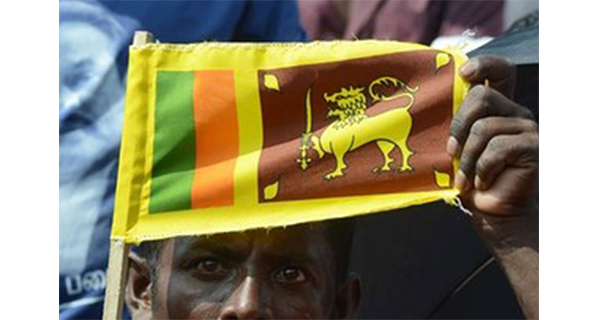Will Sri Lanka seek the assistance of the International Monetary Fund to meet its severe foreign exchange deficit? It is said that the decision will be taken at the cabinet meeting to be held today (13).
According to the Central Bank, the amount of foreign loans to be repaid in the next 12 months is $ 6.8 billion. The country currently has $ 2.3 billion in official foreign assets. When the value of gold and International Monetary Fund deposits is reduced, it is also reported to be $ 1.7 billion. Meanwhile, it is being stated that the dollar reserves we currently have will not be sufficient for imports in the next two weeks.
Despite the situation in the country, government leaders including the Minister of Finance, the Cabinet and the Governor of the Central Bank continue to state that the government has a plan to deal with this situation. The Minister of Finance recently stated that although it is true that there is an economic crisis, the present government has no intention of entering into agreements with institutions such as the International Monetary Fund. He also stated that he was not prepared to submit to anyone’s conditions.
Many suggest that the International Monetary Fund should work with Sri Lanka to address this serious economic problem. Although some people are critical of this fund, 190 countries around the world are working with the International Monetary Fund. Founded in 1944, the Fund advises and manages the financial management, management and maintenance of financial reserves in each country and also helps to maintain financial stability in the country.
The International Monetary Fund (IMF) has been dealing with the State of Sri Lanka since time immemorial, and it has been pointed out decades ago that Sri Lanka is facing a serious economic crisis similar to the one we face today. To address this, proposals were made to the Government of Sri Lanka to reduce government spending, raise interest rates for financial stability, close or restructure loss-making institutions, develop free markets, eliminate waste and corruption, and eliminate bureaucracy.
However, the Sri Lankan government not only ignored any of these proposals, but also sought to further increase government spending. Also, more commercial loans at higher interest rates for large non-profit projects such as the Lotus Tower, Hambantota Conference Hall, Sooriyawewa Stadium, etc. Reductions were also made to the required level.
At the same time, we have to maintain more than two million public sector sectors that are unbearable and have to maintain an extremely corrupt and inefficient system of government institutions such as Sri Lankan Airlines, Petroleum, Electricity Board and Sathosa which have to pump billions of rupees annually. We have faced this situation.
In an interview with Aruna, COPE Chairman Charitha Herath gave an analysis of the size of the country, which is run by a Sri Lankan population of 22 million. According to the analysis, the Sri Lankan government currently operates 2,062 state institutions, including departments, corporations, state-owned companies, provincial councils and local government bodies.
(Cabinet of Ministers – 28,
Ministries of State – 40,
Departments – 98,
District Secretariats – 25,
Corporations – 240,
State-owned companies – 125,
State Banks – 8,
Funds – 65,
Foreign Funded Projects – 124,
More Institutions – 21,
Provincial Councils – 9,
Local Government Institutions 340,
Ministries / Departments of Provincial Councils – 241,
Institutions established by the Provincial Council Statutes – 64)
He also pointed out that one tenth of the population of Sri Lanka is public servants and accordingly, the government is the main source of livelihood for 30% of the population. He pointed out that the number of public servants and state retirees serving in the Central Government and Provincial Councils and Local Government Institutions is 2.2 million. (Central Government Public Servants – 800,000, Provincial Councils – 300,000, In Public Enterprises – 2 lakhs, Retirees – 6 1/2 lakhs, Security Forces – 300,000)
Sri Lanka has been known as a country where men have been living off the labor of poor women for decades now. Sri Lanka still receives major foreign exchange strategies from overseas workers, the garment and tea industries. Nearly two million Sri Lankan women make a significant labor contribution in all three areas.
But there are a group of politicians and bureaucrats with nearly three million public servants and the more than 2,000 associated highly corrupt and inefficient system of public institutions to swallow this meager income.
The taxpayers of this country, as well as the women who earn dollars for this country, must immediately decide whether we should continue to maintain this kind of corrupt and inefficient state, leaving aside the International Monetary Fund or the World Bank.
